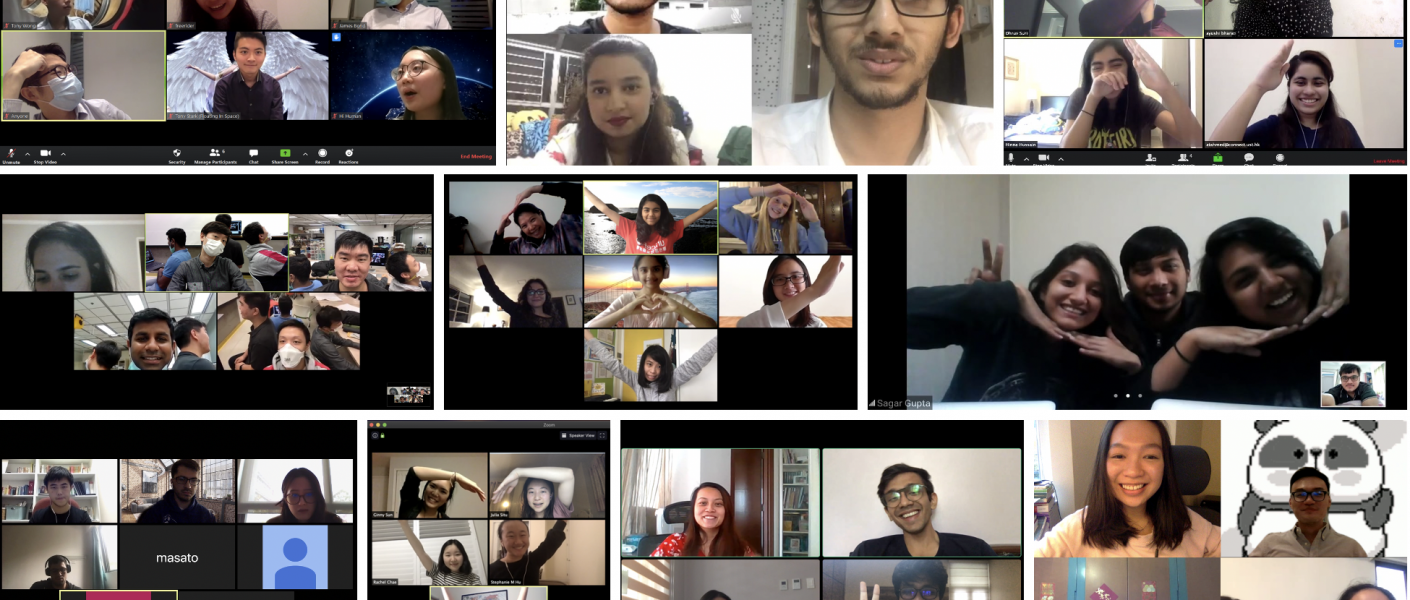University students and professionals connect online to find practical solutions to problems linked with the current pandemic.
This article was originally published on MIT News on May 13, 2020.
Marina Chan | MIT Hong Kong Innovation Node
A team of competitors cluster around a laptop screen; their table is decorated with snacks, caffeinated drinks, and scribbled Post-it notes. Stationed inside a large room with 100 other participants for 48 hours, they battle it out at HealthHACK. The place is buzzing and the energy is intense. This was the scene last year at MIT Hong Kong Innovation Node’s annual hackathon.
This year, the event took a virtual pivot when the Covid-19 outbreak went into full swing.
Undaunted by the disruption, MIT Node, MIT Hacking Medicine, and The D. H. Chen Foundation joined forces in late April, hosting a hackathon of more than 380 engineers, designers, health-care professionals, and others online. The goal was to improve mental health and well-being brought down by the pandemic. Opening remarks were delivered through a Zoom webinar, connecting participants across 16 different time zones.
“We’re turning to people like you and many others to help us all flatten the curve and to bring the number of cases down,” says Professor Charles Sodini, faculty director of MIT Node.
An experiment in rapid innovation
One of the most challenging aspects of operating remotely is transforming in-person collaborative experiences to be done by participants from home, according to MIT Hacking Medicine, a student-led group specializing in health-care hackathons. This redesign takes a leap of faith.
“Physical health-care hackathons allow people from different backgrounds to meet face-to-face and form teams around shared issues they are passionate about,” says Ginny Sun, co-director of MIT Hacking Medicine and a senior studying electrical engineering and computer science. “I was worried that in a virtual environment, without the simple act of being there in person, many participants would feel less engaged.” However, the excitement only seemed to increase, she says.
The online community was vibrant, exchanging over 16,000 text messages and emojis of encouragement between participants on the Slack platform. Alan Leung ’10, co-director of MIT Hacking Medicine says, “People came into the event ready to help solve the immediate problems that were affecting their everyday lives. Despite everything being virtual, they were able to work together and come up with novel ideas.”
These novel ideas were evaluated online by a judging panel of MIT alumni from Hong Kong. They unveiled six winning teams that will be incubated at the MIT Node for technology and professional support. Among the judges was David Wu ’90, current president of MIT Club of Hong Kong, who praised the “display of ingenuity in many of the pitches, yet all were grounded in addressing real and practical problems associated with the pandemic.“ Looking ahead, he says “many of these have applications even in the post-Covid-19 world.”
The solutions that earned the spotlight include: an app that allows for virtual triage and remote queuing to minimize waiting times at the hospital; an AI-powered Short Message Service bot to provide mental health service for the bottom of the pyramid; an app to support small businesses while promoting social distancing by redirecting people from busy restaurants to less-crowded alternatives; a guided digital service to pay tribute to the deceased and support those who have lost their loved ones; a connected device that helps improve cognitive health for the elderly at home; and an integrative system to help individuals make decisions to go out safely, using real-time crowd density information.
Dissolving physical boundaries
For Marco Clark, a participant who is studying at Hong Kong University of Science and Technology, bridging the distance between teammates in a virtual environment enabled the team to leverage productivity around the clock. “The process of our video production was like experiencing the intricacies of clockwork. Our team had members from six different time zones: Hong Kong, India, Spain, Korea, Kosovo, and the United States,” says Clark. Being able to connect globally “brings immense benefits because it allows for people to share ideas in real time smoothly.” As a result, he added, “We’ve met some really talented people who we intend to continue on this project with.”
Working behind a computer in their respective abodes, Clark’s team developed the concept of a wearable device with Internet-of-Things integration that delivers the benefits of cognitive therapy to senior citizens who are staying at home. To help refine their idea, they tapped into the brain trust of the community, including mentors from multiple parts of the globe. Clark recognizes that they “would certainly not be privy to these unique perspectives if there were physical limitations.”
While engaging online has its advantages, relying on internet connectivity and navigating the novelty of remote teamwork can be challenging. Shivangi Das, a recent graduate of the University of Hong Kong, explains, “There were times the connection would drop, and brainstorming on an online platform gets tough when we haven’t experienced online collaboration before.”
Yet the experiences they are gaining are a powerful complement to their classroom learning. “The best thing I like about this event is learning to work in a diverse team, which is often tough to practice in university classrooms,” says Das. Her team members, based in Hong Kong and India, have backgrounds ranging from supply chain management, computer science, civil engineering, and biotechnology to architecture. This invites different perspectives to broaden discussions, she says.
At the end of the day, it’s about energizing the community. Clark says, “It’s so motivating to actually feel empowered to do something about an existing crisis in the world and connecting with bright people with constructive and positive attitudes.” For him, “this is really what the community in Hong Kong needs now.”

